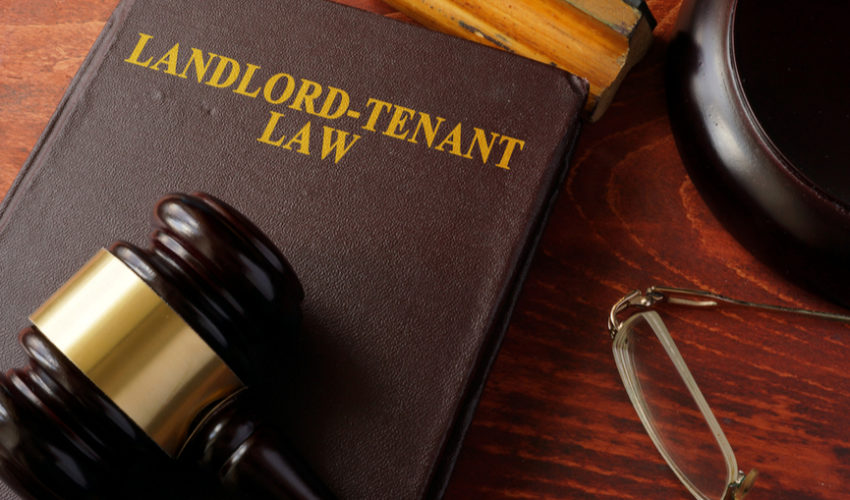Commercial property is governed by the terms of a commercial lease which is normally quite different from a residential lease. Generally, commercial leases have obligations for both landlord and tenant and are mainly concerned with what are known as dilapidations. Dilapidations relate to the disrepair of the property and simply put are the maintenance and repairs required during and at the end of the lease. It is vital that at the onset of the lease, both parties are clear what their obligations are. Sometimes a tenant will find himself or herself in the unfortunate position where the landlord fails to carry out repairs. In this article, Commercial landlord won’t do repairs, we take a look at the best way to remedy this if you find yourself in this situation.
Free Initial Telephone Discussion
For a free initial discussion on how we can help you if you find yourself in a dispute with your landlord, get in touch with us today. We will review your situation and discuss the process involved in a clear and approachable manner. Early expert legal assistance can help you avoid making mistakes, saving you money and also avoiding the stress of dealing with these issues on your own. Simply call us on 0345 901 0445 or complete our online enquiry form and a member of the team will get back to you.
As a tenant, what are my responsibilities?
Tenants are normally responsible for maintaining the rented property and ensuring it is returned to the landlord at the end of the lease in its original state. In general, any responsibilities which are not specified in the lease will fall to the tenant. Dilapidations are normally specified in the lease and the extent of these is usually dependent on the type of property being rented e.g, retail, office, industrial etc.
It is not uncommon for a commercial lease to be Full Repair And Insuring. In this instance, the tenant is responsible for all repairs and insurance.
What are the obligations of the landlord?
Landlords are usually responsible for the actual fabric of the building and its overall structure. This will include the roof, foundations, external walls and brickwork and the subfloor (as opposed to floor coverings such as carpets). Non-structural maintenance issues, such as wiring, plumbing and air conditioning normally have to be addressed by the tenant – unless there is a management fee paid to the landlord which covers such repairs. Repairs to any communal areas in a leased property will usually be the responsibility of the landlord. If the landlord has appointed a management agent to look after the communal areas, they will take responsibility for repairs.
How Can I avoid a dispute in the first place?
The key to avoiding disputes in the first place is to ensure all responsibilities and obligations of both the landlord and tenant are clearly defined and set out in the lease before you take occupation of the property. It makes life so much simpler if you get the terms agreed right at the beginning and will ensure settling any disputes becomes less problematic and protracted.
It is really important to prepare a schedule of condition evidencing the state of the premises at the start of the lease to avoid a situation where at the end of the lease the landlord tries to require you to put the premises in a better state of repair than when you took occupation. This can cause significant costs to be claimed by the landlord against a tenant.
What should I do if the landlord won’t fulfil his obligations?
Dilapidations represent one of the most common causes of dispute between landlords and tenants. From a legal perspective, fallouts of this type can be complex, and so robust and effective legal representation is essential. There are various procedures in place for this area of law, and so it is also important both landlords and tenants are in compliance with these.
If a dispute cannot be resolved between the landlord and tenant, it may be necessary to consider court action. The Pre-Action Protocol for Claims to Damages in Relation to the Physical State of Commercial Property at Termination of a Tenancy (known as the ‘Dilapidations Protocol‘) should be followed before a legal claim is made. Section 8 of the Dilapidations Protocol encourages the use of Alternative Dispute Resolution. This includes adjudication and arbitration.
If you find yourself in this position, it really is strongly recommended that you seek expert legal advice.
How we can help
We have a proven track record of dealing with dilapidation claims and helping tenants deal with claims against landlords for failure to carry out repairs. We will guide you through the process and ensure all checks are carried out swiftly and efficiently and we firmly believe that with the right solicitors by your side, the entire process will seem more manageable and far less daunting.
Conversely, we also have a wealth of experience acting for landlords bringing dilapidations claims against a tenant.
How to Contact our Property Litigation Solicitors
It is important for you to be well informed about the issues and obstacles you are facing. However, expert legal support is crucial in terms of reducing risk, saving you money and ensuring you achieve a positive outcome.
To speak to our Property Litigation solicitors today, simply call us on 0345 901 0445, or allow a member of the team to get back to you by filling in our online enquiry form. We are well known across the country and can assist wherever you are based. We also have offices based in Cheshire and London.
Disclaimer: This article provides general information only and does not constitute legal advice on any individual circumstances.




Leave a Reply
You must be logged in to post a comment.